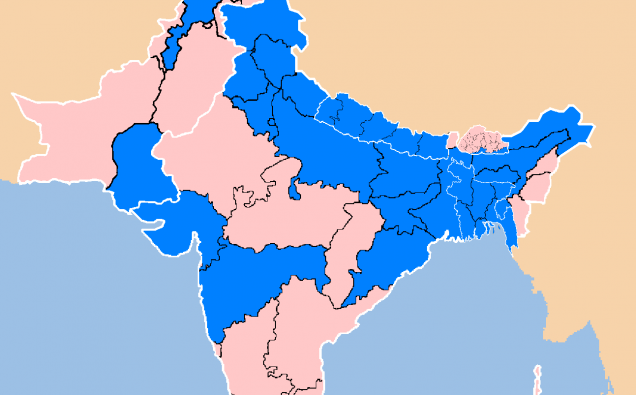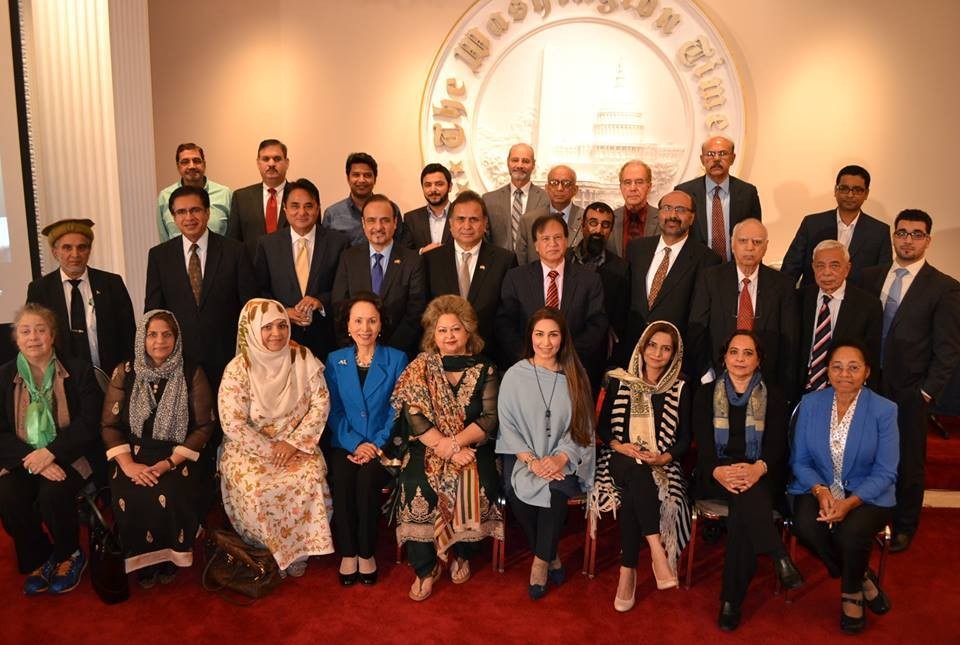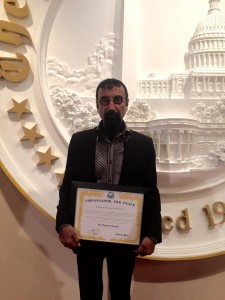
Photo showing 2007 flooding across South Asia is by Anameofmyveryown under creativecommons license via Wikimedia Commons
What is keeping South Asia mired in a morass of poverty? Corruption, conflicts, religious extremism, flawed governance, environmental degradation, water issues, floods, earthquakes or absence of visionary leadership?
That question agitated minds at a discussion hosted by the Universal Peace Federation and The Commongrounds interfaith organization at The Washington Times office this week. Here are some conclusions that emerged from the discourse.
Although India, Pakistan and Sri Lanka have made some significant strides toward economic development, more than one fifth of humanity inhabiting the critical part of the world fares far lower than other comparable regions like South East Asia. The widening gaps between urban and rural areas, between urban classes, and between the rulers and the ruled fuel a sense of insecurity, which in turn provokes violence, unrest, and ideological extremism.
India and Pakistan, the two largest countries that have produced some of the world’s exceptional figures in arts and sciences, are ranked 135th and 146th respectively on the Human Development Index, which has evolved on the concept of human well being as crafted by late Pakistani economist Dr. Mahbub ul Haq.
India has moved several notches up in terms of the size and growth of its economy, but it still houses the largest population of the poor, with millions of malnourished children amidst a highly uneven distribution of wealth.
In Pakistan, millions of children do not receive even primary education, and the stagnating low levels of budgets for education and health retard socio-economic improvement.
“Despite encouraging progress, South Asia still ranks near the bottom in every category of human security, and the nagging question is why…. the challenge it (region) faces must not be underestimated,” remarked Dr. Antonio Betancourt, who is executive director at the Office of Peace and Security, UPF, Washington.
Since their 1947 independence, India and Pakistan, the two nuclear powers, are locked in a costly conflict over the UN-recognized disputed Kashmir region, with both New Delhi and Islamabad allocating billions to defense budget each year. India is the largest buyer of weapons in the world while Pakistan has one of the largest security establishments among developing countries. The peace dialogue remains broken, despite some prime ministerial meetings, since 2008 Mumbai attacks, blamed on Pakistan-based LeT militants. Conversely Pakistan has submitted to the United Nations and the United States evidence of Indian involvement in stoking unrest in the country, which has experienced a low-intensity insurgency in Balochistan and TTP militancy in the tribal areas.
The region has also experienced implications of the 9/11-sparked war in Afghanistan, which has cast a long shadow over neighboring Pakistan. Islamabad has lost $ 100 billion in investment and economic activity over the past decade – a point highlighted by Dr. Akbar Khawaja, a former senator and World Bank expert.
Dr. Hasan Abbas, a professor at National Defense University, identified a range of troubles stopping the region from realizing its full economic potential as well as some positive signs that may help the region achieve the elusive goal of peaceful coexistence. Dr. Syed Tariq Shahab, an associate professor at George Washington University, advocated that more people-to-people contacts and collaboration in the field of arts could greatly help efforts toward India-Pakistan peace. Mrs. Tomiko Duggan, UPF Washington’s director of public affairs drew attention to the critical role women could play toward fostering peace and harmony. Dr. Zulfiqar Kazmi, who heads The Commongrounds organization, set the stage for discussion by underscoring South Asia’s importance to world peace and security.
My interpretation of the current South Asian environment and the way forward: South Asia suffers from a spate of historical, geographical, political, strategic troubles, misplaced priorities and now increasingly environmental challenges. A high frequency of natural disasters that affect neighbors such as Pakistan, India and Afghanistan jointly like the 2014 Kashmir floods and 2005 earthquake have further complicated human insecurity. Then the leadership has not been able to transcend popular political currents and instead of shaping events, flows with the current. Take for example the ineffectiveness of SAARC organization, and Indian and Pakistani inability to compromise on outstanding issues.
At the moment, however, two issues – India-Pakistan animosity and the extremism challenge dominate media and political discourse.
A sudden spike in extremist violence in Afghanistan and Bangladesh, militant presence in Pakistan and alarming trends of RSS-inspired violence in India under Narendra Modi-led BJP government incite regional ripples. The mob lynching and killing of Indian Muslims on suspicious that they eat beef has sent shockwaves all over the region. Pakistan and Afghanistan are sensitively poised in the fight against militancy, 14 years after the Afghan war, and there is no clear and concrete regional or international engagement roadmap ahead for Kabul, although President Barack Obama has committed to maintain around 10,000 troops through 2016.
The complex predicament diverts attention from other issues of human security like reduction in poverty and corruption. Then there is a lack of coordinated approach to tackling natural disasters, regional trade and judicious use of water and energy sources and human resource development.
Analysts believe the way forward demands an immediate resumption of India-Pakistan peace dialogue and evolution of a collectively congenial regional environment that gives space to diplomacy to work out solutions to lingering disputes and defeat extremist voices on both sides.
But peace parleys must have the backing of the civil societies. Thinking people, common citizens, artists, rights activists, players and sport followers, and democratic forces in both India and Pakistan will have to use civil society power through both mainstream and social media to tamp down extremism and militancy and advance the cause of South Asian peace. The UN and the world capitals, particularly Washington, which has close ties with both Islamabad and New Delhi, must also consistently encourage the peace path because a South Asian disaster will have much broader international repercussions.
The region can no longer afford another period of willful suspension of peace or sleep over climate change ramifications, which know no boundaries when natural disasters strike. Threats are looming over the region with a dire warning. A recurrence of catastrophes like the 2007 floods that swept across South Asia in the face of fast-declining climate, this year’s temblor that shook the entire region, or a man-made disaster from a conflict between two nuclear powers would plunge the entire region into darkness. Will South Asian political leaders stand up against noisy forces of extremism and shape the unfolding future to the advantage of 1.7 billion people living in the region?















